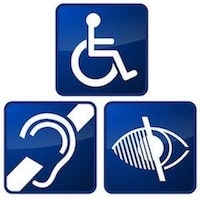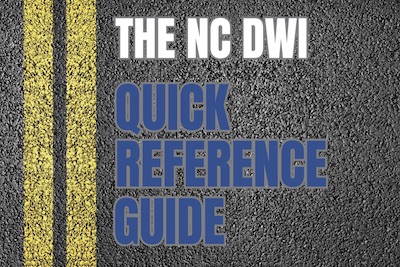Walk and Turn “Clues” or “Cues”- Can't balance during instructions
- Starts too soon
- Stops
- Misses heel to toe by ½” or more
- Steps off line
- Uses arms for balance
- Turns incorrectly
- Wrong number of steps
704-342-4357
Get a Free Case Evaluation Right Now!
Modified Transcript of “Walk and Turn DWI DUI Dexterity Tests in North Carolina” for the Hearing Impaired ![Impaired]() Hey there. My name is Bill Powers, and you are likely looking in our section on our webpage regarding driving while impaired.
Hey there. My name is Bill Powers, and you are likely looking in our section on our webpage regarding driving while impaired.
Sometimes people refer to that as DWI or DUI. DUI is the older nomenclature. It tended to refer more to driving under the influence, whereas driving while impaired can be any impairing substance, both legal and illegal substances, prescription medications, marijuana, alcohol, Xanax, combination thereof.
This video is asking a question about the walk and turn test. We sometimes refer to this as the hell to toe. I didn’t come up with these tests. They are tests that are from the National Highway Traffic Safety Administration.
I refer to that as NHTSA.
This is promulgated by a series of studies over the years of different, we call them field sobriety tests. We used to refer to them as psycho physical tests, because there’s a psychological and a physical component of them. SFSTs, so standardized field sobriety tests. I probably said that wrong, standardized field sobriety tests, SFSTs, and my apologies.
There are three main ones that we’re looking that we see a lot in court. This is one of them, so we see the horizontal gaze nystagmus, which is the eye test, where we’re looking for a jerking of the eyes or an involuntary neuromuscular reaction. There’s the one leg stand, where there’s balancing, and then there’s the heel to toe.
The walk and turn test is one of the more lengthy tests. It’s one of the more complex tests.
It’s one of the tests that has the most clues or cues, whatever you want to call them, it doesn’t matter to me, where you stand with your right foot in front of your left foot. The protocols are set forth very specifically based on the studies, and if you want to see these things, we have this online. If you go to SlideShare and look the North Carolina DWI quick reference guide. We got a new one that just came out a few months ago in 2017. You’ll see all the dexterity tests. It’s in a section of that book called NHTSA test. We, also, provide a copy free of charge to lawyers, law enforcement, judges, legal professionals that want to know more about standardized field sobriety testing.
The test is broken up into different segments. There are eight clues. The first part or first segment is what I call the prompt, or ready, or instructional phase or stage, where you put your right foot in front of your left, and you listen to the police officer tell you what to do. What they’re looking for is to see if you break the position, if you lose your balance, or you start too soon, two clues. If you’re balancing there or you break your leg position, that’s technically a clue.
Sometimes people do that while you’re standing there watching the police officer walk back and forth. The normal indication is maybe cross your arms and just separate yourself, and you forget, “Oh, I’m supposed to be standing there like this.”
The reason we call them psycho physical, as I said, is there’s a psychological component, do you remember the instruction from the police officer, and are you able to balance and stand there? Are you putting your right foot in front of your left, or the wrong way around? Are you bobbling, and while that may not be a specific clue, what we’re looking for is that are you able to do this?
The next set, the next six clues, involve things like the line. Sometimes there’s a line. Sometimes there’s not. Sometimes in intox rooms, they actually have a piece of tape on the floor. When I first started practicing law, it seemed like was just the standard protocol. Now you hear a lot of imaginary lines. I’m not saying it’s not in the training. I just don’t understand it, but how do you step off an imaginary line? How thick is it, because it’s set forth a certain amount, this separation in your feet, but generally speaking, you’re looking for a clear separation. There are some specifics. That’s why we have the book. We’re, also, looking for a number of steps, where you touch heel to toe or you come pretty darn close to heel to toe. We’re looking to see if you use your arms for balance. We’re looking to see if you stopped in the middle of the test. We’re looking to see if you do the turn incorrectly, in the wrong direction or wrong manner.
You have a series of opportunities to mess up. Nine steps down, nine steps back. I didn’t make up these rules. That’s how they come. That’s how NHTSA does these, and the police officers and law enforcement officers are supposed to follow them. That way, there’s a consistency in the application. It’s a lot grading the algebra test. I mean everyone has to do the same problem and be graded in the same way in order to get a fair grade.
How many times do you not touch heel to toe? That’s one clue. It doesn’t matter if you do it 18 times. How many times do you step off the line? How did you do the turn? How did you explain the turn? What direction did you turn? Sometimes police officers say don’t do a pivot style turn, keep your foot on the line, and take a series of small steps around.
It’s not as black and white or cut and dry. There are a series of circumstances that you need to take into consideration, the conditions, what type of shoes you’re wearing, any knee, back or balance problems. I would not just assume that you nailed the test, nor would I assume you failed a test, as I like to say.
On the walk and turn test, more willing to provide you more information. As you probably can tell, it can be a bit complicated, and we offer a free, confidential consultation, and I can’t think of another case we see these other than driving while impaired, or at least investigation of driving while impaired in North Carolina.
Thanks for checking our website. We got a lot more materials, and check out these different tests we have online available for your review. Talk to you soon.
Helpful Information About Criminal Charges  Powers Law Firm PA Home
Powers Law Firm PA Home




















